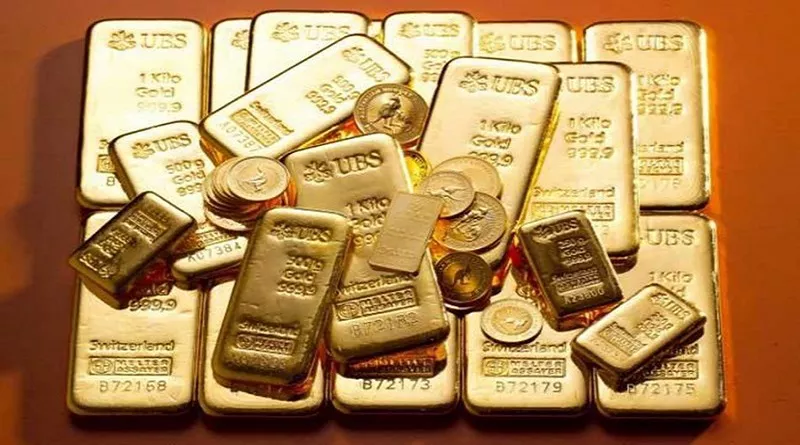Gold has long been regarded as a safe-haven asset and a symbol of wealth. Its price fluctuations are influenced by various economic, political, and social factors. The year 1979 marked a significant period in gold’s history, characterized by notable price increases and broader economic implications. This article delves into the price of gold in 1979, examining the historical context, factors affecting its value, and its implications for investors and the global economy.
Understanding Gold Prices
What Influences Gold Prices?
Gold prices are influenced by a multitude of factors, including:
Supply and Demand: The availability of gold and its demand in industries like jewelry and electronics directly impacts pricing.
Inflation: Gold is often viewed as a hedge against inflation, leading to increased demand during inflationary periods.
Interest Rates: Lower interest rates can boost gold prices, as they decrease the opportunity cost of holding non-yielding assets.
Geopolitical Stability: Political unrest or uncertainty can drive investors toward gold as a safe haven.
Market Sentiment: Investor psychology and market speculation can significantly affect gold prices.
Gold as an Investment
Historically, gold has served as a reliable investment vehicle, especially during times of economic uncertainty. Its intrinsic value and scarcity make it a preferred choice for risk-averse investors.
Gold Prices in 1979
Price Trends Throughout the Year
In 1979, gold prices experienced notable fluctuations. The year began with gold trading at around $200 per ounce and saw a significant increase by the end of the year. The following breakdown highlights the price trends:
January 1979: Approximately $200 per ounce
Mid-1979: Prices began to rise due to growing geopolitical tensions and economic factors, reaching around $300.
End of 1979: Gold prices soared to approximately $400 per ounce, marking a substantial increase over the year.
Key Events Influencing Prices
Several pivotal events contributed to the rising gold prices in 1979:
Iranian Revolution: The overthrow of the Shah in Iran led to geopolitical instability, prompting investors to seek refuge in gold.
Stagflation in the U.S.: The U.S. economy faced stagnation combined with high inflation, increasing the allure of gold as a hedge against economic uncertainty.
Soviet Invasion of Afghanistan: This event heightened global tensions and uncertainty, further driving demand for gold.
Economic Context of 1979
Global Economic Landscape
The late 1970s were marked by economic challenges worldwide, including high inflation rates, rising oil prices, and increasing unemployment. These factors created an environment conducive to rising gold prices.
Inflation Rates
Inflation rates soared during this period, significantly impacting purchasing power and investment strategies. In 1979, U.S. inflation was approximately 11.3%, pushing investors toward gold as a safeguard against diminishing value.
The Role of Central Banks
Central banks played a crucial role in influencing gold prices through their monetary policies. As inflation concerns grew, some central banks increased their gold reserves, further driving up demand and prices.
Comparing Gold Prices Over the Decades
Historical Trends
To fully appreciate the significance of gold prices in 1979, it’s essential to compare them with other decades:
1970s: The price of gold rose significantly throughout the decade, from around $35 per ounce in 1971 to nearly $400 by 1979.
1980s: Following the peaks of the late 1970s, gold prices experienced volatility, eventually stabilizing in the mid-1980s.
2000s: A resurgence in gold prices occurred due to economic uncertainty and rising demand, culminating in historic highs in the 2010s.
Inflation-Adjusted Prices
When adjusting for inflation, the price of gold in 1979 reflects a much more substantial value in today’s terms. Understanding these adjustments provides insight into the long-term value retention of gold.
Investing in Gold: Lessons from 1979
Strategies for Investors
The events of 1979 offer valuable lessons for modern investors looking to navigate volatile markets:
Diversification: Gold serves as an essential component of a diversified investment portfolio, especially during economic downturns.
Timing the Market: Recognizing the signs of economic instability can help investors make informed decisions about gold investments.
Understanding Fundamentals: Investors should remain informed about geopolitical and economic factors that influence gold prices.
Gold as a Hedge
The rise in gold prices during 1979 reinforces the notion of gold as a reliable hedge against inflation and economic uncertainty. As markets continue to experience fluctuations, gold remains a trusted asset for many.
The Future of Gold Prices
Current Trends and Predictions
As of 2023, gold continues to play a vital role in global finance. Economic factors, including inflation, interest rates, and geopolitical tensions, remain relevant in predicting future price movements.
Investor Sentiment
Investor sentiment toward gold fluctuates based on economic conditions. During uncertain times, gold often sees increased demand, supporting its long-term value.
Conclusion
The price of gold in 1979 reflects a significant period in the history of this precious metal, driven by geopolitical tensions and economic instability. Understanding the factors that influenced gold prices during this time provides valuable insights for current and future investors. As we continue to navigate an ever-changing financial landscape, the lessons from 1979 serve as a reminder of gold’s enduring value as a safe-haven asset and a strategic investment choice. Whether for wealth preservation or speculation, gold remains a cornerstone in the portfolios of savvy investors worldwide.
Related topics:
- What is Gold Price in UK Today(October 25)
- What is the Price of Gold in India Today (October 25)
- What is The Price of Gold Today(October 25)


